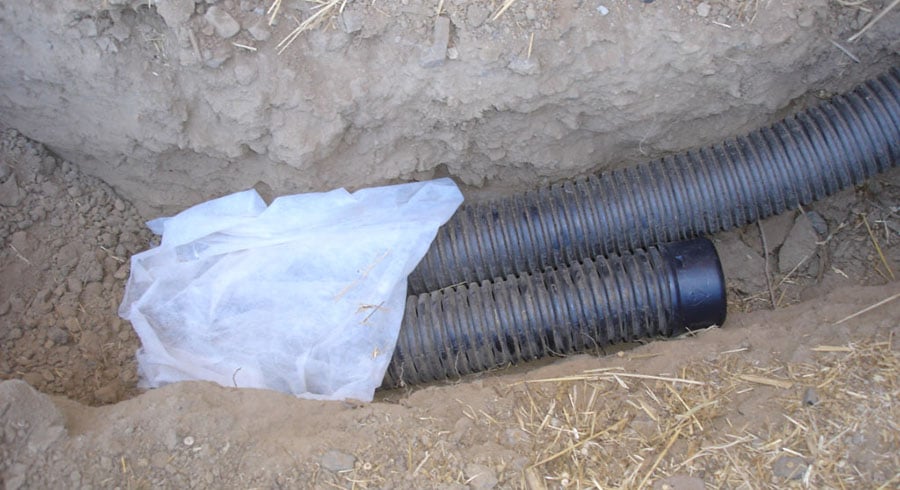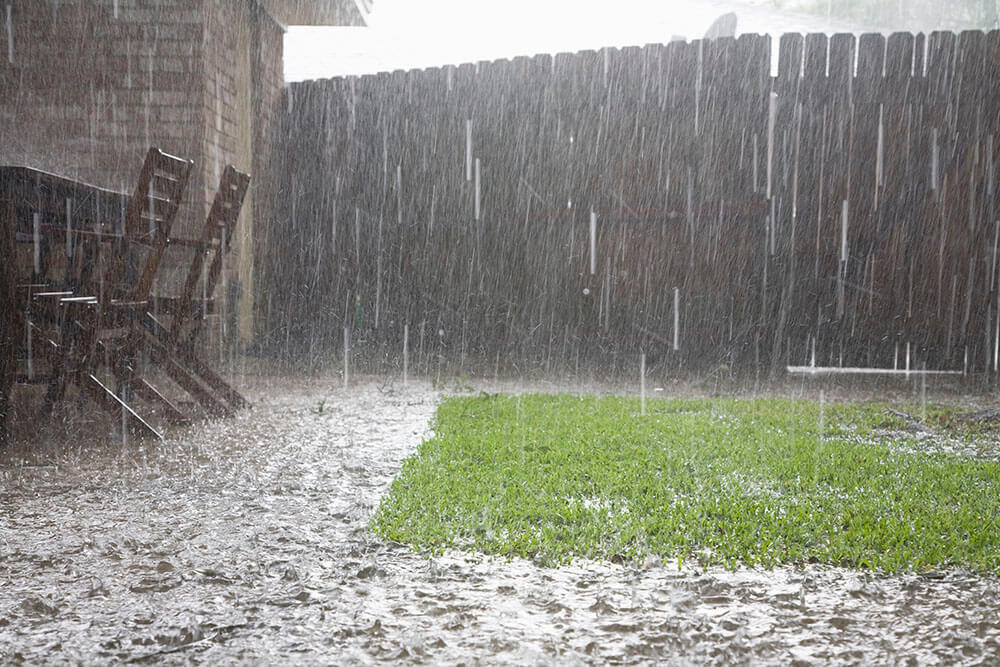Need Weeping Tile Installation in the GTA?
Or click here to learn more about foundation repair.
Foundation cracks are one of the worst things that you can see on your home. These often happen as a result of drainage issues, which develop over time and can cause serious problems. Catching them early is definitely a priority.
However, taking a step towards avoiding drainage issues altogether is crucial. Weeping tiles help prevent drainage issues at their inception, which makes them an excellent solution for all homes. In this post, you’re going to learn more about the basics of weeping tile installation. In addition, we’re going to talk about the difference between these and French drains.
Weeping tile installation and service. Contat Us.
What Are They?
Before learning how to install weeping tile features, you need to understand what they are and how they work.
A weeping tile is a 4” pipe that discharges underground water. Originally, they were terracotta-made, but the modern versions are plastic. The goal here is redirecting water away from your home’s foundations. To do this, weeping tiles use small slits or weep holes.
The holes are located on one side of each pipe. A trench is dug around the outside limits of your home, which is where the weeping tiles are placed, hole-side up. Alternatively, weeping tiles are installed into your basement floor (more on this later).
As the water under the home’s foundations rises, it pours into the pipes through the weep holes. The water flows through the pipe and is discharged through the end of the pipe. When it comes to the basement weeping tiles, the discharged water goes to a sump pump.
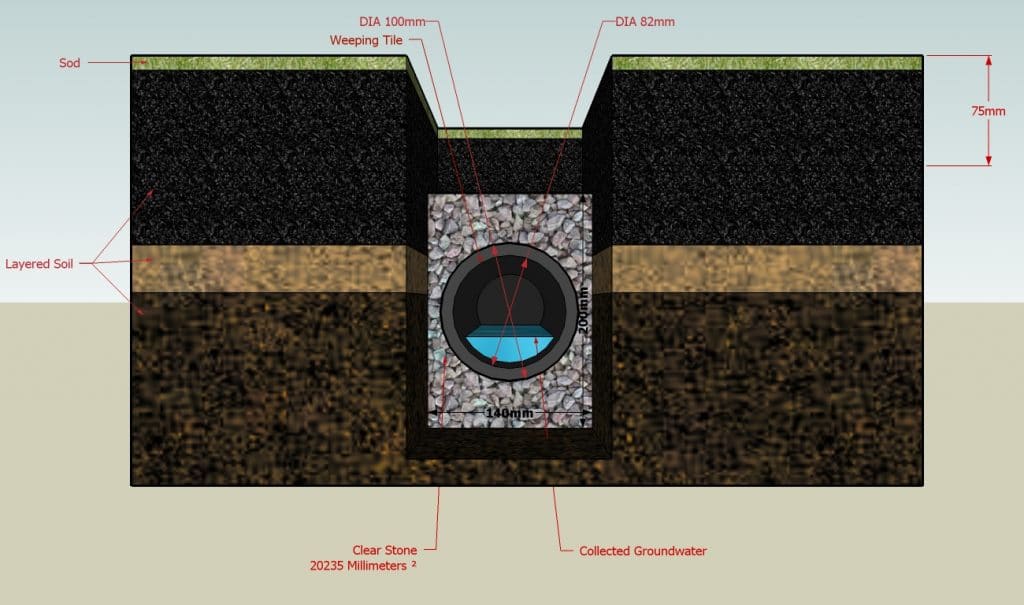
Weeping Tile System Types
People often put weeping tiles side-by-side against French drains. In reality, though, French drains are a weeping tile subcategory. Here’s more about the two weeping tile types:
- French drains are exterior weeping tiles. These are made to deal with drainage on the ground level. In other words, French drains manage drainage before it enters your home. This is the tile type that’s installed into trenches dug around your home’s outside perimeter.
- Interior weeping tiles are the second layer of protection against drainage issues. When and if the French drains fail, this system directs the water to a sump pump. The pump sends the water through the piping, to the storm sewer outside.
French drains require more work during installation, while the interior tiles are installed like sump pumps – 12”x12” trench is dug around the basement’s perimeter.
How to Install Weeping Tile
Before we move on, you need to understand that the weeping tile installation process is extremely complex. Although French drains require more work, interior weeping tiles aren’t exactly a breeze, either. We recommend referring to a professional before starting the installation process on your own.
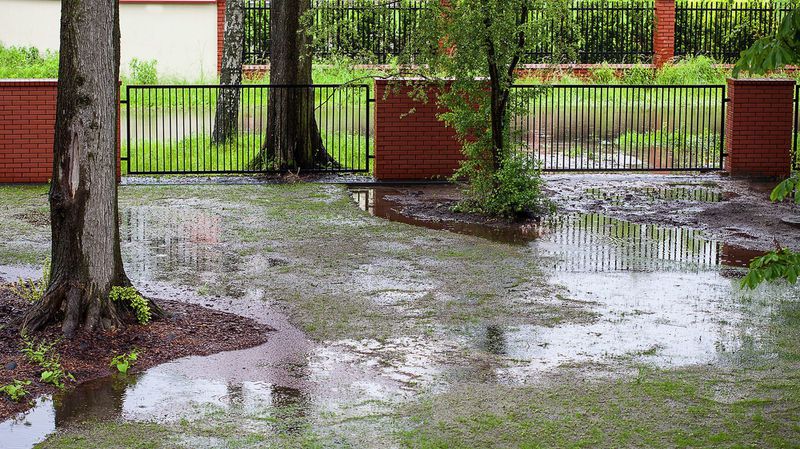
Exterior Weeping Tile
Yes, you need to prepare for back-breaking work, but that’s far from the only problem with French drains. You’ll need to get proper equipment, determine the slope, and get all the necessary materials. This is why performing the installation on your own is not advised. In any case, here are the basics, so you can understand the process.
- First, a trench is dug. This trench is supposed to be 12” in width, and surrounding your home’s outside perimeter. For every eight feet, the trench needs to slope one inch. The plants and soil that are in the way are removed and stored in a pre-determined location.
- After the trench is dug, about two to three inches of gravel are applied to the trench’s base. Preferably, river or granite gravel is used
- Then, the pipe is laid on top of the poured gravel. It is then wrapped with landscape fabric to avoid potential obstructions down the line. Bear in mind that you should leave a joint for cleaning out, which will help with the maintenance.
- Finally, the trench is filled with gravel or a sand-gravel combination. On top, dirt with sod is added, which conceals the French drainage and allows you to replant the removed plants.
Interior Weeping Tile
Installing interior weeping tiles is much easier than French drainage. First of all, the area of work is probably much smaller. Secondly, if you’ve ever installed a sump pump, you’re going to be familiar with the whole process. Still, this is a lot of hard work, and hiring an expert to handle this is recommended.
- The concrete floor in the basement is cut through with a circular saw and a chipping hammer. The required opening is supposed to be around 12”x12” and surround the basement’s foundations. Once the gravel below the concrete is accessed, a 1’-2’ trench is dug.
- Like with French drainage, gravel is poured, until it fills the bottom of the trench.
- The pipe is then laid, much like with the exterior weeping tiles, as explained above.
- Then, the area is covered with gravel. This is left to settle for around a day. Finally, concrete is poured.
Clearly, the installation of either weeping tile types is complicated and labour-intensive. But that’s not the only reason to consider hiring an expert. With the sump pump and all the other accessories, you can expect more than $10,000 worth of expenses.
Weeping Tile Maintenance
Weeping tiles, interior or exterior, need to be checked on regularly. The problems are supposed to be addressed immediately, to avoid complications. The maintenance process includes cleaning out debris and leaves from the gutters and frequently redirecting downspouts from the house outwards. This goes for window wells, too. The sump pump also needs to be working properly at all times, which is why you should consider adding a backup battery.
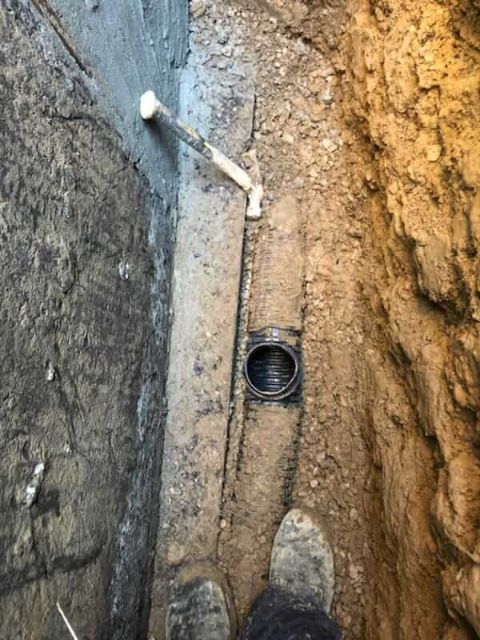
Wet Basement? Schedule A Free Onsite estimate
There are many other aspects of weeping tile maintenance that you’ll note if you decide to install this kind of drainage on your own. However, it’s recommended that you contact a professional for regular maintenance.
Weeping Tiles Are a Lot of Work
There you have it, now you know how to install weeping tile. In combination, interior and exterior weeping tiles help prevent drainage and protect your foundations. If you decide to take this installation project on your own, expect a lot of work, complications, and various expenses.
Ideally, you should have a professional perform the installation for you. In this way, you’ll avoid complications and save money. Have the same professional perform regular weeping tile maintenance for you, as well.



